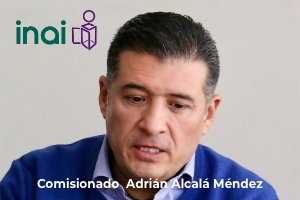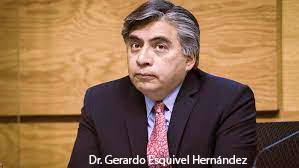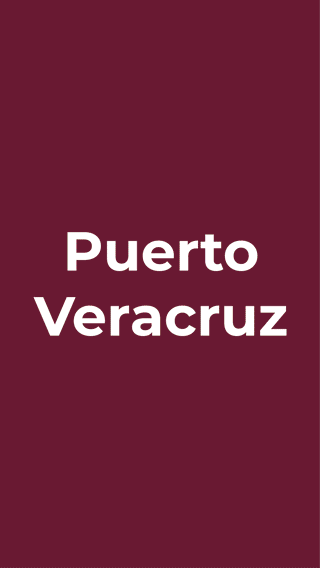Nancy DeRosa
Sargassum and the Future of Tourism along the Quintana Roo Coastline
Since Cancun’s conception in the early 70’s, Quintana Roo has strived to become this planet’s first choice in beach destinations. Out of all tourists who arrive to Mexico, more than 50% choose Quintana Roo for its undeniably most beautiful white sandy beaches and turquoise blue warm waters. Tourists flock to enjoy this world renown beach life, lovely sunny days, swaying coconut palms, tropical weather, the warm turquoise waters, relaxing leisure, and breathtaking recreations… In fact, tourism generates 87% of Quintana Roo’s Gross Domestic Product (GDP).
However, there is a problem that has developed, one that can harm Mexico’s golden egg, one that if it is not solved will change lives in Mexico, as without tourism the State of Quintana Roo has no future. This issue takes commanding precedence over the (1) Maya Train Project, the (2) Tulum International Airport Project, or with the problems associated with (3) the State’s less than 12% sewage systems infrastructure, and the (4) growing insecurity of rivaling factions… to list a few.
Sargassum: the what, where, and why of this seaweed
The heartbreaking truth: Sargassum has been washing ashore on Caribbean beaches in massive amounts, in the summer months, since 2014. Rarely was this ever seen before on our shores. As investigations began, it was found that these algae arrive full of poisons, toxically filled with arsenic and heavy metals. Which makes these aquatic plants UNUSABLE for food or fertilizer, UNUSABLE! People have certainly tried to dream up practical possibilities utilizing these ocean water plants. One company was making blocks for house construction. Another soles for footwear, all examples that did not work all so well and would never ever alleviate much of the massive amount of seaweed that lands on this coastline. Nevertheless, people are trying, and for that it was worth their effort, bless them all.
As the sargasso develops, it is lovely and beautiful just like a normal growing plant. Seaweeds, in fact, are grown by humans and are eatable. Others are grown to be used for fertilizer. Today sargassum grows faster than ever, the theory is global warming affecting the top layer of our ocean the most, with warmer temps which is the perfect petri dish for the now rapid growth rate. As it breaks away from its nursery, it floats around the ocean waters in islands drifting with our ocean currents, and because of its incredible ability to draw nutrients from the water will soak up everything it meets, picking up toxic chemicals left behind by the clearing of lands to raise cattle for our meat consumption, pig farm excrement, DDT, Glyphosate, fertilizers, heavy metals, arsenic, waste..For this it is a great asset to our humanly manipulated planet as it cleans and clears these deadly poisons from our water systems.
The theories: the following has been discussed…
1. Growth in the Sargasso Sea, then breaking free and floating around the Gulf of Mexico picking up toxic residues from the Mississippi Delta, and then landing on our shores.
2. Sargasso starting its growth pattern near the AMAZON River Delta and then picking up its toxic debris from Brazil’s River Delta, and landing latter on our shores.
3. The oil spills from some 300 oil platforms stationed in the Gulf of Mexico, leaching, spilling, blowing out platform holes, this oil debris will eventually sink to the floor decomposing. This sunken oil mess changes with age into a fertilizer compound called phosphate which will work as a Miracle Grow catalyst to intensify the seaweed growth, then add to #1 and #2.
Please note: The countries of United States and Brazil both need to clean up their river systems from their careless drainage of harmful, dangerous chemicals and residues that enter these rivers, which most likely will never happen in today’s controlling corporate world. Thus, we need to deal with this problem and solve it ourselves.
Removal: The cleaning of the beaches first started with hotel employees, residents, volunteers, hand-labor of love all equipped with racks and wheel barrels in hand. People from all corners of our State came to help, men, women, and youth, wheeling the sargasso away, bit by bit.
Then came the heavy machines: tractors and dump trucks. Driving up and down the beaches, hauling away this menacing alga at a more efficient rate, but destroying the nesting sea turtle habitat, as these vehicles not only crush all turtle eggs underfoot but also compact beach sand causing the sea turtles no ability to dig their nests. Use of heavy machinery is highly against the law as clearly stated in Nom 162 published in the Official Gazette of the Federation on March 9, 2001,
6.6.2 In case of using vehicles to make monitoring tours, they must have a maximum gross vehicle weight of 300 kg, the maximum speed of circulation must be 20 km/h and use low pressure tires (less than 5 pounds per inch). square or 35 kPa). Vehicle circulation must be outside the nesting area or, where appropriate, in an area where the integrity of the nests is not disturbed.
Then the ‘problem’ was soon discovered that all sargasso removal directly from the beach is filled with beach sand, 50% or more of beach sand also was being taken from the shoreline. Losing 50% of beach sand does NOT work if we want tourists.
As this seaweed decomposes wherever it is removed to, it will release both harmful ammonia and hydrogen sulfide gases into our atmosphere. The rotting foul-smelling debris is now a toxic health risk.
Next came the floating tube/net barriers paralleling the beaches, although this looked like it would be a wonderful remedy, the barriers need daily attention with sometimes up to 10 clean-ups by boat per day. Large swells still allow the seaweed to breach and break these anti-sargassum barriers. But most saddening of all, the newly hatched baby sea turtles will swim right into this floating turtle dungeon. This is not the right choice.
But that is not all that will affect the sea turtles: floating seaweed islands are laced with dead baby turtles as once they safely can make it out to the open ocean, digging out of their nests, entering the ocean thru the coastal seaweed, escaping sea birds and hungry fish, they get stuck below these seaweed islands with no chance to reach the surface to breath.
In large quantities, these massive floating seaweed mats strip oxygen from the water, killing fish and seagrasses that offer key habitat for many species. It reduces sunlight needed by ocean plants and smothers shallow coral reefs.
Turtles: The Quintana Roo Coastline is famous for its turtle studies and numbers, with Xcacel/Xcacelito and Aventuras Akumal beaches known to the world as the most important turtle nesting beaches in the entire Atlantic Ocean. The yearly studies, of nests and hatchling releases sponsored by Semarnat, are the most organized and complete of all countries..Mexico is doing this right.
Navy Sea-Harvesting ships: with predictions for larger amounts of sargasso arriving in the up-coming years, we need to change our approach to keep the Riviera Maya and all Quintana Roo appealing to tourists and at the same time secure for the sea turtles. Our best solution is Navy Sea Harvesting Boats, ones that capture these algae while it is floating in the ocean, while it is still clean and free from sand, before it arrives to our coastlines. We need as many Sea-Harvesting vessels as our navy can designate. Mexico can boost 30 navy boats in service now with an additional 12 decommissioned boats. We could use the 12..This should be the top priority in Quintana Roo for ecological reasons of course which are directly related to a prosperous tourism, our main industry. This needs to be organized as soon as possible, so we are poised and ready to harvest in 2022, so far, usually beginning in April and washing ashore through October, at least for the past 7 years.
We will also need to set up Biodigesters on land which can convert this seaweed into gas, the fuel we use daily in our stoves and water heaters..Most importantly with this approach, there will be NO release of toxic fumes. Biodigesters are easy to set up and are not expensive nor take up much space. There are several companies already situated in Cancun and plans for more in the future.
During a recent press conference, Dianco Mexico CEO Héctor Romero Morales, who plans a new biodigester plant next year, said “There is already a solution, to take advantage of all the sargassum that invades the coasts of Quintana Roo and the Caribbean islands. In addition, there is now a place to deposit all the collected sargassum, to take full advantage of it in an ecological way and without waste”.
It is now time for the government to step up and make the difference. Mexico has a military that is not engaged with war, but it does have a gigantic fight right under its feet, one that we can win, the war against seaweed.
For most of history, man has had to fight nature to survive. Today is no different. We need to protect our future and Mexico has the power to win.
* Resident of Akumal since 1984. Activist, Diver, and Beach Bar Owner.
www.savemexico.org





